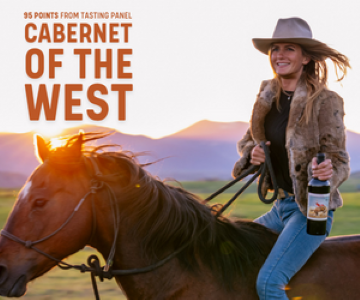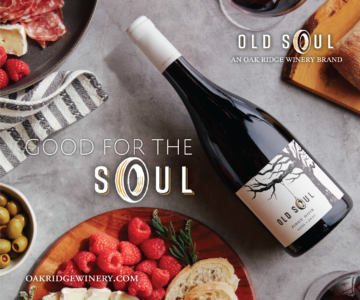THREE LOS ANGELES BARS PROVE THAT THE 500-YEAR-OLD SHOCHU CATEGORY IS STILL AHEAD OF ITS TIME
story by Kate Newton / photos by Anna Beeke
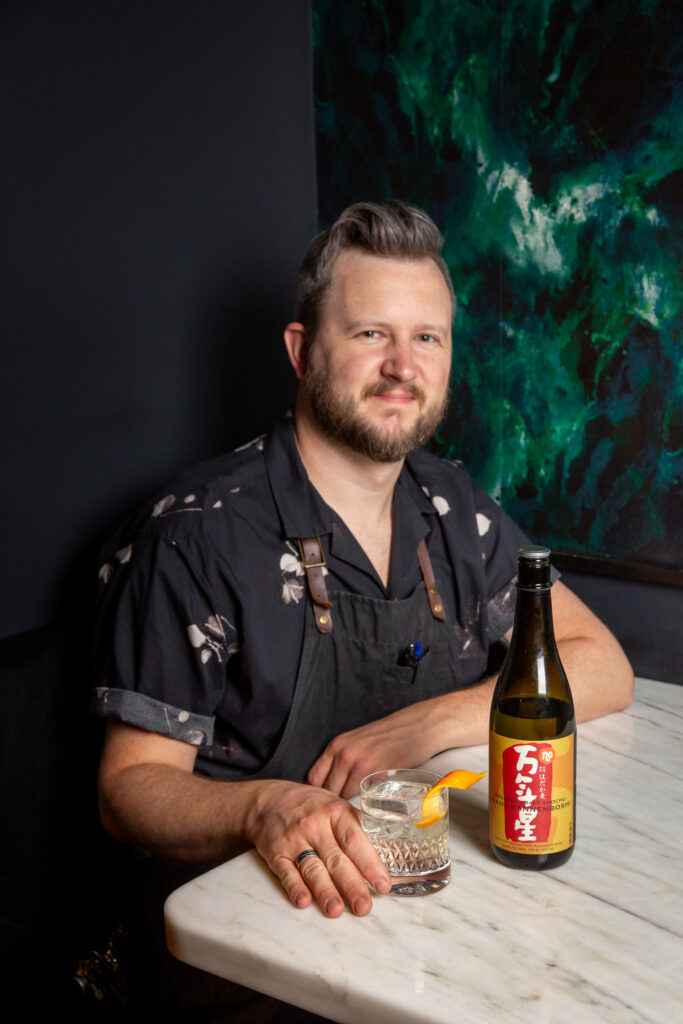
DEATH & CO’S OXYA OLD FASHIONED
◗ 1.5 oz. Asahi Mannenboshi barley shochu
◗ 0.5 oz. Mal Bien Zacate Limón lemongrass mezcal
◗ 1 tsp. Kalani Coconut Liqueur
◗ 0.5 tsp. Green Chartreuse
◗ 1 tsp. sugarcane syrup
◗ 1 dash orange bitters
Combine ingredients in a mixing glass and add ice. Stir until chilled, then strain over a large ice cube in a chilled Old Fashioned glass. Garnish with an orange twist.
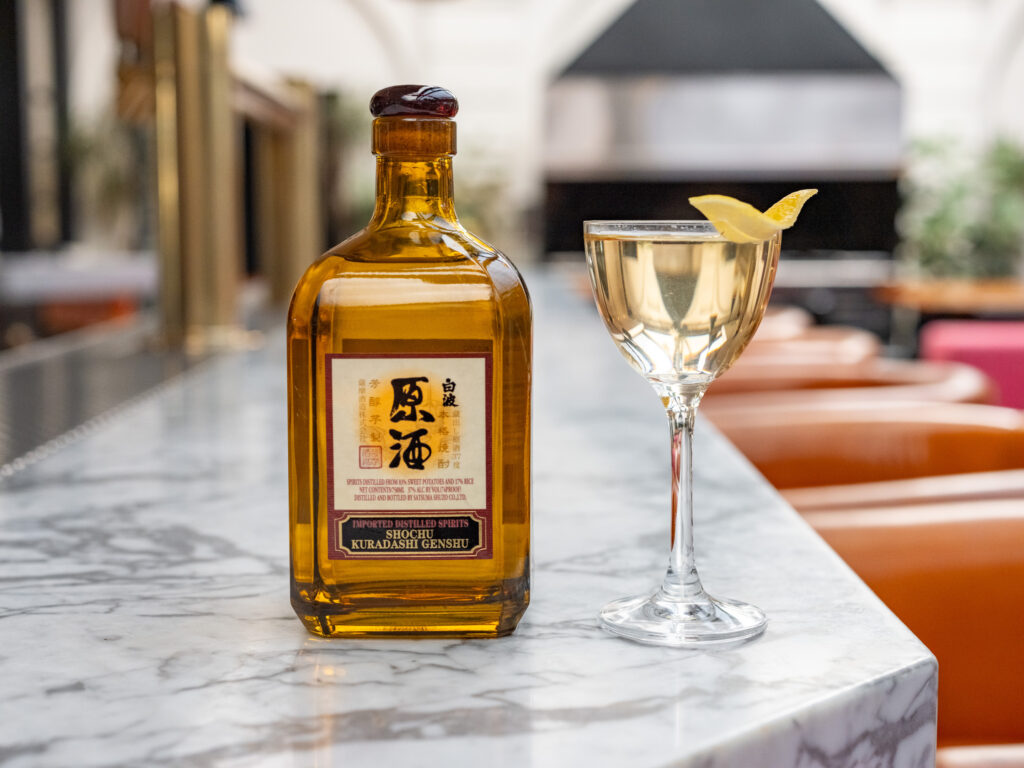
to hide it—I wanted it to shine,” says Redbird bar director Tobin Shea of the Satsuma Shiranami Genshu Shochu fea- tured in his Golden Gai cocktail.”
REDBIRD’S GOLDEN GAI
◗ 2 oz. Satsuma Shiranami Genshu Shochu
◗ 0.5 oz. Cocchi Extra Dry Vermouth di Torino
◗ 0.5 oz. Cap Corse Mattei Blanc Quinquina
◗ 0.25 oz. umeshu liqueur
Add ingredients in a mixing glass with ice. Stir until chilled and strain into a coupe. Garnish with a lemon twist.
When Los Angeles’ first sushi bar opened in the 1960s, launching a long-simmering culinary craze that would irrevocably alter the city’s dining scene over the course of the following decades, a Japanese beverage introduced as its ideal pairing partner similarly rode the wave to widespread popularity: saké. While it’s now a mainstay in restaurants and bars across the country, saké is actually outsold in its home country by another category, shochu—a spirit that people might be tempted to describe as one of Japan’s best-kept secrets if they’re just now starting to spot it on cocktail menus, given that its roots date back to at least the 16th century.
Yet shochu—a clear distillation made from a vast array of typically starch-heavy ingredients such as barley, rice, potatoes, buckwheat, and molasses as well as a flavor-rich fungus known as koji—has been steadily on the rise for the past decade, especially in LA, where bars have showcased it not only in highballs, a format that puts its incredibly distinctive and diverse aromatic profiles, flavors, and textures on full display, but in other inventive drinks. So when the Japan Food Product Overseas Promotion Center (JFOODO) opted to launch a campaign geared toward further promoting the category stateside several years ago, it seemed only natural that LA would be a prime market.
For this year’s campaign, launching in January, nine bars across the city were selected to craft both a signature shochu highball and a craft cocktail featuring a variety of brands, many of which have deviated from the traditionally low alcohol level of shochu to produce higher-ABV expressions designed with mixology in mind. Read on to see how three of those businesses are embracing the spirit as part of the campaign and beyond to further demonstrate its international potential and remarkable versatility—and for more information on the campaign, visit shochu-jfoodo.jetro.go.jp.
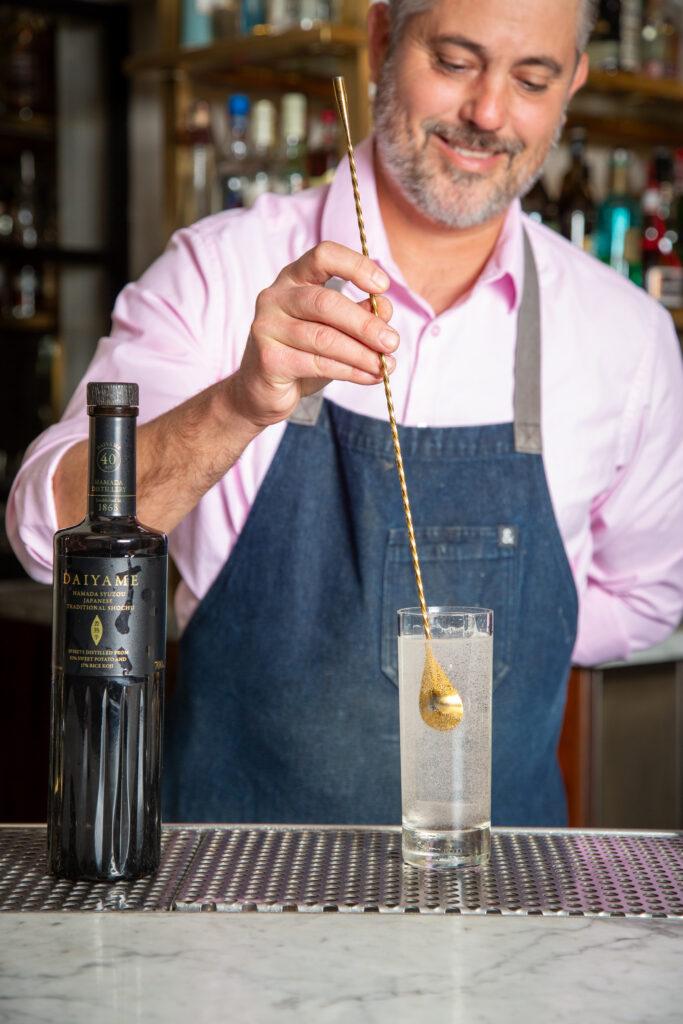
A Conduit for Complexity: Death & Co
Matthew Belanger, bar manager at the downtown Los Angeles location of cocktail institution Death & Co, got a crash course in shochu while working at Karasu, an izakaya (Japanese bar) in Brooklyn. “Tasting the breadth and depth of the category, I fell in love with it and was struck by how novel it was and just how unfamiliar some of those flavors were—and [by] all the interesting applications of those flavors in cocktails,” he says.
When Belanger moved to LA to help open Death & Co, which is just a few blocks away from the Little Tokyo neighborhood, the spirit proved it could play an integral role in encapsulating “different aspects of the huge cultural mélange that is Los Angeles,” he explains. “On our opening menu we had one shochu drink, and then since we’ve expanded so that there are always two or three different options.” The most well-received cocktails—including a riff on a Whiskey Sour with blended Scotch, lemongrass shochu, cantaloupe, and egg white—have featured it alongside other spirits “to create more drama and more texture,” Belanger says, adding, “We’re able to make something that tastes really novel and cool and promotes something that we’re really interested in, but we’re packaging it in this way that’s digestible. . . . It’s almost like we’re Trojan Horsing people into trying stuff they would never try on their own, because that’s what we’re excited about. And hopefully it’s broadening people’s horizons.”
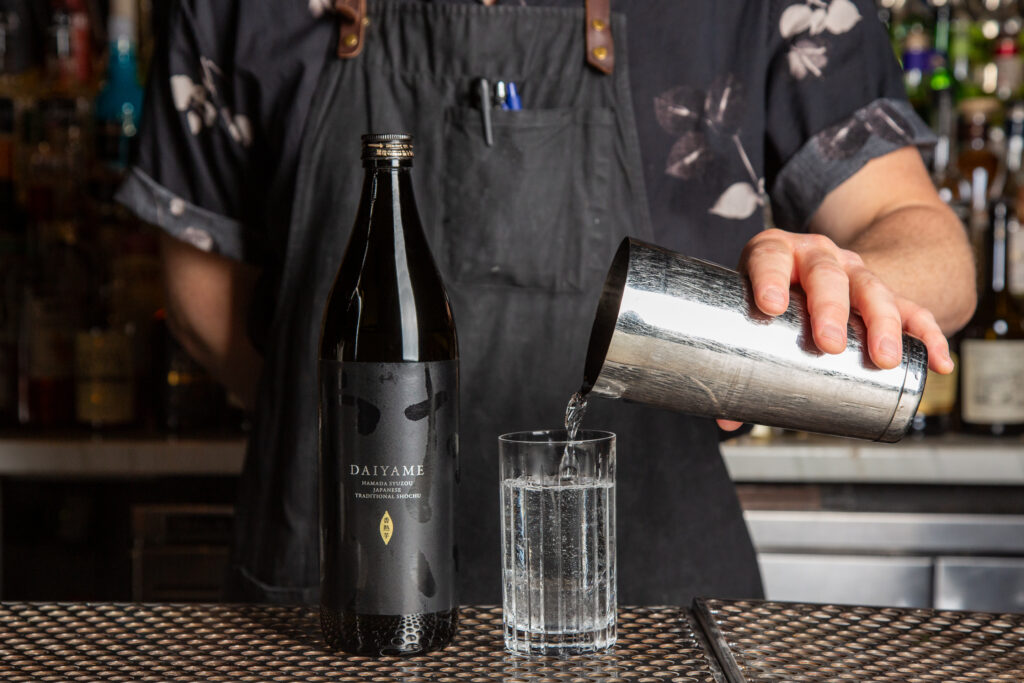
While shochu is still viewed by many as a niche product, Belanger notes, its base ingredients can yield “broadly applicable” profiles—for example, the confectionary and umami notes of barley shochu and the nuanced fruitiness of sweet potato shochu—while preserving their own essence, enabling them to “work with almost any type of drink that you want to make.” That includes his Dovetail Shochu Highball featuring Daiyame Hamada Syuzou shochu as well as his Oxya Old Fashioned (see recipe) with Asahi-Mannenboshi barley shochu and Mal Bien Zacate Limón lemongrass mezcal, a drink that balances the rich, chocolaty profile of the shochu with florality and herbaceousness imparted by the other meticulously curated ingredients. “It’s a fun game to play to try and put strong flavors in juxtaposition with one another and see if you can get them to battle to a stalemate,” he says—not to mention an exercise in creating a memorable experience for guests: “That’s what the real joy of these spaces is, is . . . seeing the look of revelation on [people’s] faces when they try something. Shochu has a lot of opportunity for that.”
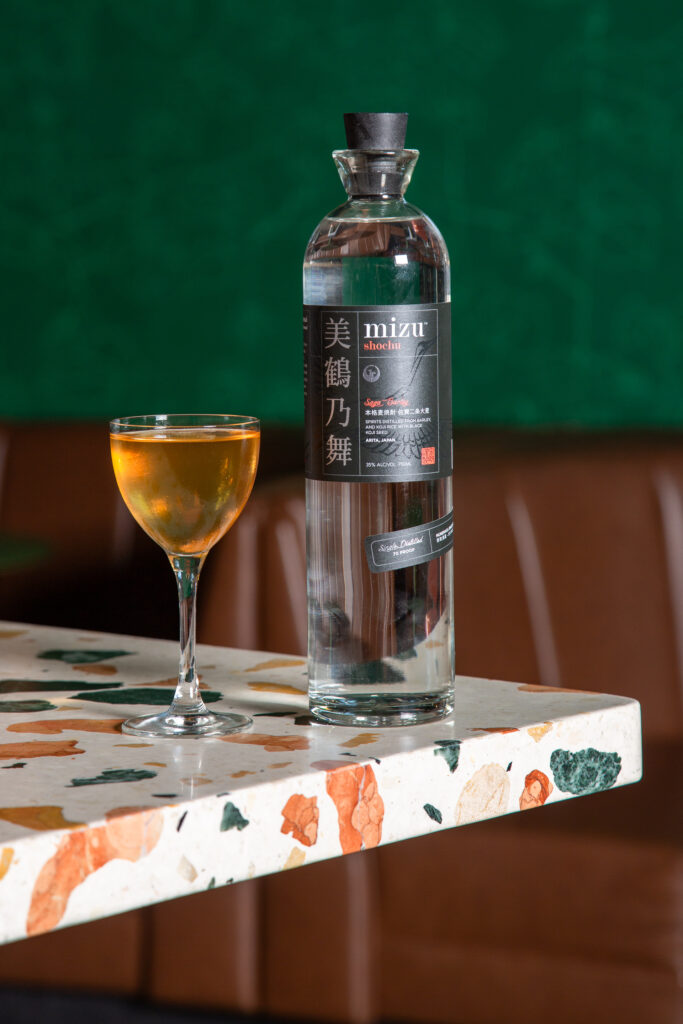
THUNDERBOLT’S GOMA MARTINI
◗ 2.25 oz. Mizunomai Saga Barley Shochu
◗ 0.25 oz. Amontillado Sherry
◗ 0.25 oz. honey syrup
◗ 0.75 oz. hōjicha tea
Stir ingredients with ice and serve in a chilled Martini or Nick and Nora glass. Finish with a spritz of tangerine oil.
Channeling “A Pure Expression”: Thunderbolt
Crowned as The Best Bar in West USA by 50 Best in 2023, Thunderbolt hasmastered the delicate art of servingcomplex, eye-catching cocktails in anunpretentious setting in LA’s EchoPark neighborhood, making frequentuse of techniques like centrifugalinfusion and clarification, fat washing,and force carbonation in drinks thatcan share a table with dishes like friedchicken biscuits and collard greens.“Because [owner Mike Capoferri] isfrom the Atlanta area, I always thinkof it as bringing Southern hospitalityto Southern California,” says headbartender Tom Liu.
Liu became acquainted with shochu brand iichiko while working at the now-closed LA location of the NoMad Hotel, and not long after he landed at Thunderbolt, he sought to showcase it in a cocktail that’s now featured in the “Culinary Adjacent” section of the bar’s newly revamped menu: Called the Fu Gwaa Falsetto, it’s essentially a “bitter-melon Swizzle” that showcases the fruit and the distinct umami character of iichiko’s Saiten expression alongside Oaxacan rum and Manzanilla Sherry, among other ingredients (he laughs while noting that many Asian guests share their polarizing memories of bitter melon as children, adding that it typically makes a much better impression on their adult palates). “As I delved into [shochu] more and saw how it’s made from so many raw materials, [I realized] it’s such a pure expression of [those materials],” says Liu. “And because there are so many different categories, there are so many different ways to play around [with it]. It meshes well with a lot of different spirits.”
To create his cocktail for the JFOODO campaign (see recipe), the Goma Martini, Liu fat washed Mizunomai Saga shochu with sesame oil (goma means “sesame” in Japanese) and added sweetness via a touch of honey that’s counteracted by Amontillado Sherry, which adds a nutty note to complement the sesame; meanwhile, hōjicha (Japanese roasted green tea) dilutes the drink while giving it an earthier character. “I love that Martini as is, but it needs something to uplift it a bit. So we used a tangerine oil that we spritz on top, and that adds a really nice brightness to it,” Liu explained. It exemplifies the vast range of flavor profiles in which shochu can play a starring role, capturing the attention of bar patrons consistently seeking to push the limits of their palates. “We’re a very innovative cocktail bar, and [shochu is] one more thing to push out that can be very interesting for our guests,” he says.
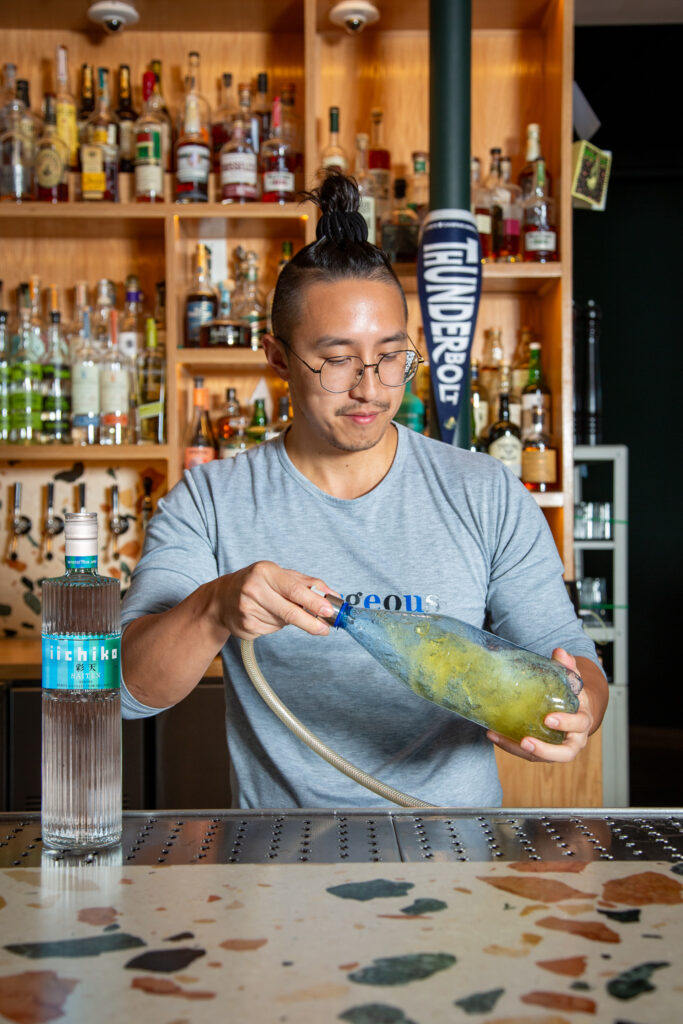
Packing a Punch: Redbird
Not far from Death & Co on the otherside of Little Tokyo, longtime LAbarman Tobin Shea, one of the facesbehind Redbird’s acclaimed beverageprogram since the restaurant opened in2014 who now serves as its bar director,knows all too well what it takes to makeyour menu stand out from the competition.“The difference between the basiccocktail bar and the really good ones,you see ingredients like shochu—andyou’re starting to see it worldwide,” hesays, noting that the key lies in havingaccess to distributors who can connecthim with the sort of high-qualityproducts that “become part of thefabric of Redbird” once they prove tobe a hit with guests. “The higher-proof[shochus], [you] can’t believe all thataroma and flavor is coming off of [it],”adds Shea. “Really good, well-producedspirits stick with you for two to threeminutes after you have that sip, and alot of these shochus are doing [that].”
As people returned to Redbird after the pandemic shutdown, Shea witnessed firsthand an increased interest among guests in seeking out categories they were intrigued by but had left unexplored—and that trend has yet to abate. “We have a whole generation of drinkers now who are [looking for] no-ABV and low-ABV [options], and the lower-ABV shochus . . . are right what the doctor ordered in the sense that the market is shifting in that direction—and what more can you ask for than to have something that has such a long history and tradition and, on top of that, has all of those big, punchy flavors and works well in a highball?” he says. “It’s really set up for success.” In the case of the highball Shea created for the campaign with Daiyame 40, “the lychee [note was] so insane that I was in awe the first time we smelled it. It almost smells like a liqueur.”
And if the highball is the “gateway,” as Shea puts it, more intricate cocktails like his Golden Gai made with Satsuma Shiranami Genshu Shochu (see recipe) pave the path that leads toward a deeper appreciation of the spirit. “The aromas are so big and pungent that I didn’t want to hide it—I wanted it to shine,” he notes. Needless to say, shochu’s homeland has the same desire: “In Japan, they said, ‘We’ll keep shochu over here and not let you have it for a while,’ and now they’re like, ‘Let’s really open the doors on this one,’” says Shea. “That’s the great thing with being where we’re at [by Little Tokyo], is that any time we use any Japanese ingredients, it’s because we know we have the synergy here with people who are looking for the Japanese experience.”

